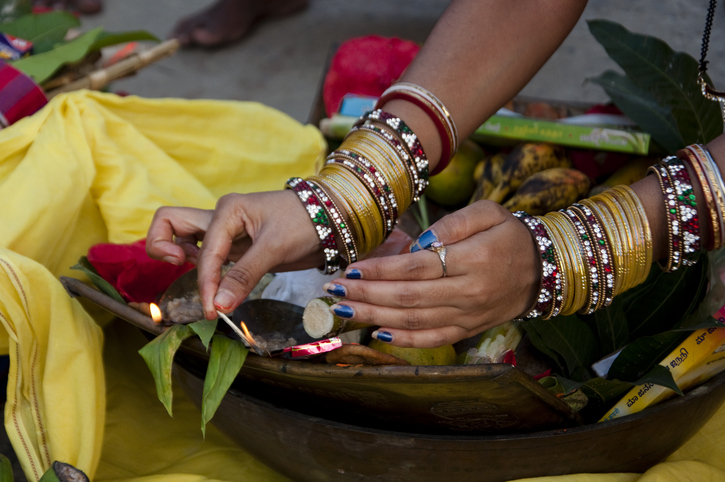When Prime Minister Narendra Modi announced in his 126th episode of Mann Ki Baat address that the Government of India is striving to secure UNESCO’s Intangible Cultural Heritage status for Chhath Mahaparva, it struck a powerful chord across the nation. He described Chhath as a “global festival in the making,” adding that once recognised, “people in every corner of the world will be able to witness its grandeur and divinity.”
This push places Chhath Puja alongside internationally celebrated Indian traditions like Yoga and Durga Puja, reaffirming the government’s commitment to showcasing India’s living heritage on the global stage. But beyond the prospect of recognition lies a deeper truth — Chhath is not only a ritual; it is a philosophy of coexistence, ecology, and spiritual discipline.
An Ancient Festival with Modern Relevance
In an era when climate change and ecological distress dominate the global agenda, Chhath Puja quietly offers a sustainable model for living in harmony with nature. Rooted in the Rig Veda and steeped in centuries of faith, it embodies the symbiosis between spirituality and environmental stewardship — an idea India has long cherished.
Originally confined to Bihar, Jharkhand, and eastern Uttar Pradesh, the festival has now crossed continents. From the ghats of Patna to the beaches of Mauritius, and from New Delhi to New York, devotees of the Sun God gather to pray, purify, and preserve. They clean riverbanks, light lamps, and offer arghya to the rising and setting sun — reaffirming humanity’s eternal bond with the elements.
Faith in the Sun — Science in the Rituals
At its core, Chhath is an ode to the Sun, the eternal source of life and energy. The rituals — fasting, standing waist-deep in water (katisnan), and offering prayers at dawn and dusk — reflect gratitude, self-discipline, and ecological consciousness. Each act carries scientific wisdom: sunlight strengthens immunity, disinfects the environment, and nourishes the body with vitamin D, while hydro-therapy through katisnan is known to rejuvenate and heal.
The festival’s emphasis on cleanliness and purity also aligns with the ideals of Swachh Bharat Abhiyan and Namami Gange. Before the festivities, devotees voluntarily clean ponds, rivers, and neighbourhoods, transforming public spaces into models of community hygiene. In many ways, Chhath is a grassroots environmental campaign wrapped in faith.
A Culture of Gratitude and Harmony
In the Mithila region, where Goddess Sita was born, gratitude toward nature forms the essence of life. Worshipping the Sun, water, trees, and animals is not superstition but an expression of dharma — a moral code that recognises all life as interconnected. Chhath thus reinforces the ecological consciousness deeply ingrained in Indian civilisation.
Beyond its spiritual depth, the festival nurtures social harmony and emotional balance. Devotees practise abstinence, refrain from indulgence, and uphold unity within families and communities. Such collective observance fosters brotherhood and moral discipline — values that the modern world desperately needs.
From Regional Devotion to Global Diplomacy
The government’s move to seek UNESCO recognition for Chhath carries wide-ranging impacts:
• Cultural Diplomacy: Promoting Chhath internationally projects India’s living heritage and strengthens bonds with the global Indian diaspora.
• Environmental Message: The festival embodies eco-friendly practices — clean water, pollution-free surroundings, reverence for the Earth and the Sun — ideals central to sustainable development.
• Economic Empowerment: Recognition would boost local economies through tourism, traditional crafts, and rural livelihoods. The puja depends entirely on indigenous products — bamboo baskets, earthen lamps, fruits, and grains — supporting artisans and farmers alike.
• Global Relevance: As solar energy gains prominence in the fight against climate change, the symbolic act of worshipping the Sun becomes even more meaningful — merging faith with futuristic science.
A Call for National Recognition
There is also a compelling argument for declaring Chhath Puja a national festival as this author demands. Its values of purity, discipline, and harmony resonate across regions and religions. It brings people together in collective effort — cleaning water bodies, maintaining decorum, and expressing gratitude to nature. Recognising Chhath nationally would amplify these ideals and provide fresh momentum to the government’s environmental and cultural missions.
The Spirit of a Nation, the Message for the World
Every Indian festival carries a moral, but then Chhath stands apart for its blend of devotion, discipline, and scientific relevance. As the sun rises over the ghats each Chhath morning, it does more than light the waters — it illuminates the human spirit with hope, humility, and harmony.
In preserving this tradition, India is not only honouring its past but also shaping a sustainable future. Chhath Puja, once a regional ritual, now shines as a symbol of India’s cultural resilience and environmental wisdom — poised to become a global heritage under PM Modi’s visionary push.










